No, there is no Lake Robinson, at least, not as far as I know. This report is about the “Lake District” and ‘Robinson Crusoe Island”, but I better start with Crux. Observing the Southern Cross, on a starry, starry night, has been one of my (secondary) objectives. One may wonder why it had to take this long (48 nights …) to finally find and see alpha, beta, gamma, delta and epsilon in their red, orange, silver and blue dresses, marveling at the naked beauty of these heavenly bodies. To be sure, there were no forty eight nights to observe them, not even half of that number but, unless one explicitly decides, “now or never”, if it is a good viewing night, one often, if not always, postpones: I will do it tomorrow….
The dry air and the clear skies were still with us when we arrived in Puerto Montt, a sort of capital of the so-called Lake District. This region is still considered “Southern Chili”, as in sparsely populated and economically undeveloped. It groups a number of big blue lakes of volcanic origin, a few predominantly (central) European-settled towns and protected wilderness. From here to Santiago is a twelve hour drive, and to Punta Arenas there is a regular bus, thirty-five hours, up and down, on the East site of the Cordillera, via a route that straddles the border. The world as we know it, is still far away!
The guide started by telling us how lucky we really were. After all it rains 200 days per year for a total of 60in, or 1800mm. Living n the epicenter of the Western European Rain Dominions, I know that with those statistics, the chances for a blue sky day are slim indeed. As a matter of fact, the previous day they enjoyed an all-time record warm temperature, breaking the 1942 mark. The new one stands at 86*F/30°C.
The excursion took us a little north, and then east to the Argentinean border – Chile measures here, as in many places, less than 60 miles across. The lakes have been formed by volcanic activity. The first one, also the biggest in Chile, has an exquisite name that I cannot get stored in my long term memory. Measuring about 350 square miles, it is called “Lago Llanquihué”, with obvious Indian roots. My end point was another one, cozier and easier to remember: All Saints Lake (obviously no Indian roots). Nature has certainly done a great job at landscaping in this neck of the woods: snow-topped volcanoes (with all kinds of “tops”, including the blown-off variety), emerald lakes, all shades of green trees, lots of colorful flowers … while a matching infrastructure is still lacking, it is a pleasure for the eyes.
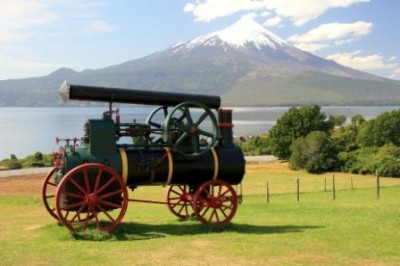 Driving past the various lake beaches on a summer Sunday afternoon, I was struck by the skin color of the locals: contrary to other parts of South America that I have visited so far, the general tendency was for pale skins. Indeed, I have seen a few real redheads, as they also sported authentic freckles! I have been told that very few Indians (Mapiche) survived the early colonization and that the area, from the coast all the way to the Lake Llanquihue, has been settled by Germans primarily. Traces of that influence could be seen in building styles and store names. I also detected a fire brigade truck that had “Feuerwehr” written across it!
Driving past the various lake beaches on a summer Sunday afternoon, I was struck by the skin color of the locals: contrary to other parts of South America that I have visited so far, the general tendency was for pale skins. Indeed, I have seen a few real redheads, as they also sported authentic freckles! I have been told that very few Indians (Mapiche) survived the early colonization and that the area, from the coast all the way to the Lake Llanquihue, has been settled by Germans primarily. Traces of that influence could be seen in building styles and store names. I also detected a fire brigade truck that had “Feuerwehr” written across it!
Lastly, let me mention my first (and implicitly not my last) Pisco experience! No, Pisco has nothing in common with Cuzco, or any other Inca treasure, it is the national drink (also in Peru). The ship’s management had warned us though, in writing no less, about the dangers of consuming local Pisco. It wasn’t the “Pisco” itself (akin to Italian Grappa) that poses a direct health problem, although it is 100 Proof, but rather the other ingredients. The most critical is egg white and many a “mariner” had been taken ill over the years by spoiled eggs. We found a place, right in front of the gorgeous Volcan Isorno, (where they also sported an old German steam machine), with live chickens! Re-assured about the eggs, we indulged in a refreshingly potent and potently refreshing Pisco. Here comes the recipe:
Take eight parts of Pisco, four parts lime juice, three parts of syrup (the type defines the name of the Pisco, e.g. mango, green chilies, cinnamon & honey, avocado, mint, pineapple) and one raw egg white. Shake well with ice, strain in a glass. Salud! After our Pisco, we returned to the ship to promptly set sail for our next destination, seven hundred miles away, in the South Pacific.
Looking at maps of emptiness requires a special “setback switch”, for a ship is not a car and the scale plays games with our habits. The attraction “next door” is thirty-six hours away. Moreover, going west in the evening, and almost turn back on a dime, costs daylight hours. Nobody is counting of course, but the discrete changes in sunrise and sunset times, are substantial, raising an attentive eyebrow or two.
We arrived at Robinson Crusoe Island when it was still pitch dark. The sun was supposed to rise at 0810. We were anchored within shouting distance from the “capital” by 0730. Apparently the ship’s carpenters had to get to work on the pier infrastructure before we could safely get to land. There were no scheduled excursions; after all the place measured barely ten square miles.
This island, plus another two that constitute the Juan Fernandez archipelago, named after their Spanish discoverer (1574), saw its first (Swiss) settlers in 1877. The only noteworthy event of the intervening three hundred years was the “arrival” of Alexander Selkirk in 1704. He was dropped – at his request! – on the beach because he did not trust the seaworthiness, nor the captain’s skills of a ship en route to Peru. The ship sank a few months later off the Peruvian Coast and Alexander got plucked off the island by a rare passer-by in 1708, four years and four months after having chosen his new domicile.
Daniel Defoe, an erstwhile relatively obscure English writer, must have heard the story, presumably from Selkirk himself, and created the Robinson Crusoe bestseller. That is why, apart from romanticizing the adventure, some survival (and surviving) attributes of Robinson, alias Alexander, can be visited, most notably his cave and his outlook. The former is on a gently-sloping beach, just a few feet above the waterline. The latter is a saddle on the mountain ridge, 1800ft (600m) above sea level.
When I had been planning y walk the previous day, the idea was to set out for a three hour roundabout of the island, not unlike what I had done at Devil’s Island – it seems already an eternity ago. When the shuttle was ready to get us to shore, the sun was rising and the plan had to be shelved. San Juan Bautista, the only port and home for the six hundred inhabitants, resembled a huge stadium, hemmed in by steep walls on all sides. Any kind of walk had to be up, and then down again.
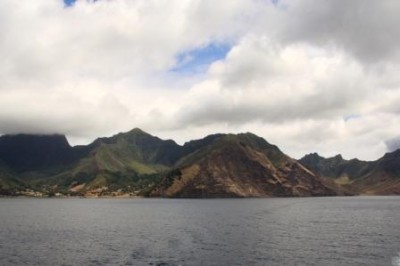 Rather than spending time in the tourist area with all the gift shops (imported from the mainland), I decided to go for gold: Alexander’s Lookout or “Mirador Selkirk”. The info board stated 2700m. Since that could not be the height, it had to be the length. After fifteen minutes uphill I had left the houses behind me, as well as all (imagined) competitors. Another fifteen minutes and my heartbeat was way up and my shirt started to change color. The first patch of rain forest had been traversed and, the path turned less steep. Another half a mile I detected a lookout point, a couple of hundred meters below the saddle.
Rather than spending time in the tourist area with all the gift shops (imported from the mainland), I decided to go for gold: Alexander’s Lookout or “Mirador Selkirk”. The info board stated 2700m. Since that could not be the height, it had to be the length. After fifteen minutes uphill I had left the houses behind me, as well as all (imagined) competitors. Another fifteen minutes and my heartbeat was way up and my shirt started to change color. The first patch of rain forest had been traversed and, the path turned less steep. Another half a mile I detected a lookout point, a couple of hundred meters below the saddle.
By now, I had walked almost an hour and rain had set in (it would come and go four times in as many hours). Because my phone did not work and the going became more slippery, I decided to wait for the next pack of “climbers”. It soon became obvious that the pack would number zero, and I reluctantly turned back. I had enough excuses, the more important one that the ship would not wait if I did not make it back in time; nor would they have an easy way to figure out where I was… because the few birds that kept me company, were not of the messenger type.
After a rather tricky descent, straining the knees and calf muscles beyond what they have recently experienced, I arrived back in the village. The “spiny lobster catchers” appeared to be carrying much more Indian genes than what I had seen on the mainland thus far. To compensate for that, the island was full of Irish-colored dogs (no freckles though), in all sizes and shapes. They all had neckband but behaved like stray dogs (shared by the entire community perhaps?). They were quite friendly though and many visitors, including myself, were followed by one and the same dog, all the time until they left the pier – a live replica perhaps of Robinson’s guardian angel?!
Robinson Crusoe Island is, when you are in the neighborhood, worthy of a visit. In the summer it enjoys pleasant weather, with a sprinkling never far away. That explains the exquisite shades of green that cover the steep volcanic walls. The rock formations infiltrate the green tapestry with variations of yellow: from a whitish sand color, over ochre to orange yellow and igneous dark. It all makes that cruising around the island produces some remarkable pictures. And you can get a shot at Alexander’s cave as well!
Prinsendam, Day 51 – Thursday, Feb 24th, 2011
En route to Aconcagua
 Blijft nog de “oever” vanwaar wij dit alles mogen overschouwen. Het schip splijt het water en verstoort de oceaan zijn rust … En dat creëert golven, die een heel ander beeld te voorschijn toveren dan de oceaan erachter: zij vormen een breuklijn, zij zijn een oever of, als je wil, de onderrand van een kader rond het eerdergenoemde schilderij. Een heel speciale breuklijn is het zeker, zowel in vorm, als in kleur, als in textuur. Men kan het zich best voorstellen als een flinterdunne en drijvende kobaltzilveren plaat die onregelmatige maar zachte, afgeronde golven vertoont: de schaduwkant is donker kobaltkleurig en de lichtkant is zijig zilver. Daarenboven lopen er bovenop de plaat onmiskenbare patronen: sommigen zijn gebubbeld, zoals kippenvel, anderen zijn gestrengd, zoals de lengtedoorsnee van een koord. Naarmate ze zich verder van het schip verwijderen, en dus dichter bij de echte oceaan komen, verbrokkelen de bergen-en-dalen in solitaire heuveltjes en putjes, tot ze … opgaan in het oneindige.
Blijft nog de “oever” vanwaar wij dit alles mogen overschouwen. Het schip splijt het water en verstoort de oceaan zijn rust … En dat creëert golven, die een heel ander beeld te voorschijn toveren dan de oceaan erachter: zij vormen een breuklijn, zij zijn een oever of, als je wil, de onderrand van een kader rond het eerdergenoemde schilderij. Een heel speciale breuklijn is het zeker, zowel in vorm, als in kleur, als in textuur. Men kan het zich best voorstellen als een flinterdunne en drijvende kobaltzilveren plaat die onregelmatige maar zachte, afgeronde golven vertoont: de schaduwkant is donker kobaltkleurig en de lichtkant is zijig zilver. Daarenboven lopen er bovenop de plaat onmiskenbare patronen: sommigen zijn gebubbeld, zoals kippenvel, anderen zijn gestrengd, zoals de lengtedoorsnee van een koord. Naarmate ze zich verder van het schip verwijderen, en dus dichter bij de echte oceaan komen, verbrokkelen de bergen-en-dalen in solitaire heuveltjes en putjes, tot ze … opgaan in het oneindige.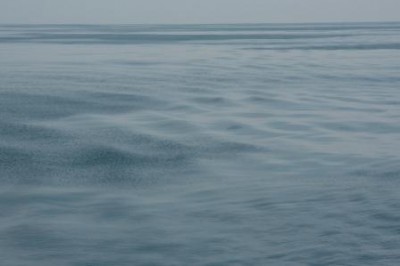 En als dat allemaal nog niet genoeg is om van te genieten, is er “the marine life”. Het wemelt onder water inderdaad van leven: luie walvissen, haaien, tonijn en … speelse dolfijnen. De eerste en de laatste soort heb ik zelf gezien (boven water weliswaar!), de rest heb ik van “horen zeggen”.
En als dat allemaal nog niet genoeg is om van te genieten, is er “the marine life”. Het wemelt onder water inderdaad van leven: luie walvissen, haaien, tonijn en … speelse dolfijnen. De eerste en de laatste soort heb ik zelf gezien (boven water weliswaar!), de rest heb ik van “horen zeggen”.  De kapitein beweert zelfs dat hij scholen vissen kan zien voorbij zwemmen in het (inderdaad zeer) heldere water. Van waar hij staat zou ik dat misschien ook gezegd hebben!
De kapitein beweert zelfs dat hij scholen vissen kan zien voorbij zwemmen in het (inderdaad zeer) heldere water. Van waar hij staat zou ik dat misschien ook gezegd hebben!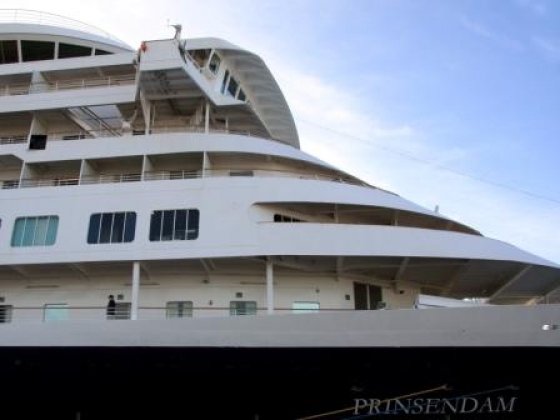
 Meandering though the last patches of road, still strewn with an unimaginable variety of garbage, we arrived at Tambo Colorado. With the desert to the West and South, and the Andes to the East, it benefits from the grandiose setting. It was touted, in the tour guides, as resembling Pompeii. Even injecting a lot of imagination, it is not: especially under the white light of the midday sun, you have to have good eyesight and be wide awake to discern the red, and especially the yellow wall paint (let alone paintings, or frescos!).
Meandering though the last patches of road, still strewn with an unimaginable variety of garbage, we arrived at Tambo Colorado. With the desert to the West and South, and the Andes to the East, it benefits from the grandiose setting. It was touted, in the tour guides, as resembling Pompeii. Even injecting a lot of imagination, it is not: especially under the white light of the midday sun, you have to have good eyesight and be wide awake to discern the red, and especially the yellow wall paint (let alone paintings, or frescos!).  Meanwhile I had been told that the host and owner was actually the Minister of Finance of Peru. He and his wife had started this hacienda twenty years ago and made it a green pearl in the surrounding desert (using water from the more or less seasonal Pisco River nearby). After next month’s elections he will be able to spend more time here again, I heard. The textile shop was actually an initiative of his wife. She had started a campaign, a long time ago, against domestic violence that culminated in gathering a number of women to make handicrafts, using traditional techniques. Today they number thirty-five, and produce beautiful artifacts (tapestry, handbags) in this otherwise desolate region.
Meanwhile I had been told that the host and owner was actually the Minister of Finance of Peru. He and his wife had started this hacienda twenty years ago and made it a green pearl in the surrounding desert (using water from the more or less seasonal Pisco River nearby). After next month’s elections he will be able to spend more time here again, I heard. The textile shop was actually an initiative of his wife. She had started a campaign, a long time ago, against domestic violence that culminated in gathering a number of women to make handicrafts, using traditional techniques. Today they number thirty-five, and produce beautiful artifacts (tapestry, handbags) in this otherwise desolate region. Zelfs Pizarro’s luitenanten hadden zich tegen hem gekeerd (ten minste heel even!)omdat de handelswijze niet strookte met de Spaanse militaire ethiek. De wreedheid waarmee dit gebeurde moeten de geïnteresseerden maar eens ergens nalezen (of mij een pintje betalen als ik terug ben). Vorige maandag heb ik zelf voor dat (praal)graf van Pizarro gestaan. Aangezien al de Indianen zijn uitgemoord is het niet onlogisch dat de baas van de veroveraars, die er nog steeds de plak zwaaien, een aantal standbeelden krijgt!
Zelfs Pizarro’s luitenanten hadden zich tegen hem gekeerd (ten minste heel even!)omdat de handelswijze niet strookte met de Spaanse militaire ethiek. De wreedheid waarmee dit gebeurde moeten de geïnteresseerden maar eens ergens nalezen (of mij een pintje betalen als ik terug ben). Vorige maandag heb ik zelf voor dat (praal)graf van Pizarro gestaan. Aangezien al de Indianen zijn uitgemoord is het niet onlogisch dat de baas van de veroveraars, die er nog steeds de plak zwaaien, een aantal standbeelden krijgt! Prinsendam, woensdag 2 maart 2011
Prinsendam, woensdag 2 maart 2011  Lima heeft redelijk wat gemeen met Brussel, en België. Zo staat er een groot orgel van Belgische makelij in de kathedraal. Omdat het reeds sinds 1880 kapot was, heeft men er recentelijk een elektronisch bijgeplaatst, van Japanse makelij. In het sjieke Franciscanenklooster hangen ook wat schilderijen van Rubens, zo werd gezegd. Het zou wat zijn, negen schilderijen van Rubens in een donkere refter van de paterkens in Lima…! Het plaatje ernaast specificeerde de herkomst wat nauwkeuriger: uit het atelier van Rubens. Tenslotte is het Peruviaans Justitiepaleis, volgens de gids, opgetrokken naar het model van zijn Belgische tegenhanger: a Big Palace for a Little Justine, unfortunately, voegde hij er fijntjes aan toe.
Lima heeft redelijk wat gemeen met Brussel, en België. Zo staat er een groot orgel van Belgische makelij in de kathedraal. Omdat het reeds sinds 1880 kapot was, heeft men er recentelijk een elektronisch bijgeplaatst, van Japanse makelij. In het sjieke Franciscanenklooster hangen ook wat schilderijen van Rubens, zo werd gezegd. Het zou wat zijn, negen schilderijen van Rubens in een donkere refter van de paterkens in Lima…! Het plaatje ernaast specificeerde de herkomst wat nauwkeuriger: uit het atelier van Rubens. Tenslotte is het Peruviaans Justitiepaleis, volgens de gids, opgetrokken naar het model van zijn Belgische tegenhanger: a Big Palace for a Little Justine, unfortunately, voegde hij er fijntjes aan toe. We zijn om zes uur vertrokken uit Lima, met mist natuurlijk, een mistige miserie. De kapitein wou kennelijk wat ruimte creëren en kondigde aan dat we in westelijke richting zouden varen tot we uit de erwtensoep waren. Nu, na drie uur, is dat ongeveer gelukt. En we worden al continu gezelschap gehouden door een dertigkoppige schare witbuikige wapperende vogels die, sneller vliegend dan wij varen, luidruchtig toertjes rond het schip draaien en mee opschuiven, in de kwetterende donkerte.
We zijn om zes uur vertrokken uit Lima, met mist natuurlijk, een mistige miserie. De kapitein wou kennelijk wat ruimte creëren en kondigde aan dat we in westelijke richting zouden varen tot we uit de erwtensoep waren. Nu, na drie uur, is dat ongeveer gelukt. En we worden al continu gezelschap gehouden door een dertigkoppige schare witbuikige wapperende vogels die, sneller vliegend dan wij varen, luidruchtig toertjes rond het schip draaien en mee opschuiven, in de kwetterende donkerte.  Zelf had ik op dat ogenblik reeds tijd in de kerk doorgebracht: ze zat bomvol, en zelfs in de zijbeuken werden er zichtbaar gebeden gepreveld. De devotie was voelbaar. Ik merkte dat het consecratie was en ben, mijn “roots” indachtig en uit eerbied voor de beleving van deze gelovenden, bij een pilaar blijven staan. Tot het Onze Vader heb ik me niet verroerd: omdat ze hier (eindelijk) terug ongeveer echt Spaans spreken, kon ik zelfs volgen! Na dit gebed vroeg de priester (of pater, of abt, ..) om mekaar vrede toe te wensen. Als er armoede is in het land, is de vrede bewaren zeker en vast een prioriteit. Kijk maar naar Egypte (daar moesten ze het zonder deze missen stellen)
Zelf had ik op dat ogenblik reeds tijd in de kerk doorgebracht: ze zat bomvol, en zelfs in de zijbeuken werden er zichtbaar gebeden gepreveld. De devotie was voelbaar. Ik merkte dat het consecratie was en ben, mijn “roots” indachtig en uit eerbied voor de beleving van deze gelovenden, bij een pilaar blijven staan. Tot het Onze Vader heb ik me niet verroerd: omdat ze hier (eindelijk) terug ongeveer echt Spaans spreken, kon ik zelfs volgen! Na dit gebed vroeg de priester (of pater, of abt, ..) om mekaar vrede toe te wensen. Als er armoede is in het land, is de vrede bewaren zeker en vast een prioriteit. Kijk maar naar Egypte (daar moesten ze het zonder deze missen stellen) De tweede kleinste stad is die van de rijken. Of de superrijke oligarchie daar ook verblijft, heb ik niet kunnen uitmaken. Dit zijn de districten San Isidro en Mirafores, dat door de Stille Oceaan wordt geflankeerd. De mooiste hotels, de exclusiefste winkels en aantrekkelijke appartementen met zeezicht (drie slaapkamers is een goede tweehonderd duizend Euro), die vind je daar allemaal. Het is aangenaam, en veilig toeven, met minder wapens op straat, in deze gemeenten.
De tweede kleinste stad is die van de rijken. Of de superrijke oligarchie daar ook verblijft, heb ik niet kunnen uitmaken. Dit zijn de districten San Isidro en Mirafores, dat door de Stille Oceaan wordt geflankeerd. De mooiste hotels, de exclusiefste winkels en aantrekkelijke appartementen met zeezicht (drie slaapkamers is een goede tweehonderd duizend Euro), die vind je daar allemaal. Het is aangenaam, en veilig toeven, met minder wapens op straat, in deze gemeenten. De haven waar we terecht kwamen is een gat in de woestijn. In de haven gebeuren twee dingen: bulkschepen lossen maïs en ze nemen strooizout terug mee naar Canada en de USA. Omdat het hier bijna dagelijks zeer hard waait, komt er veel zeewater en –schuim terecht op de duinen, het water verdampt, het zout blijft liggen en wordt er regelmatig afgeschraapt om stante pede te worden verscheept.
De haven waar we terecht kwamen is een gat in de woestijn. In de haven gebeuren twee dingen: bulkschepen lossen maïs en ze nemen strooizout terug mee naar Canada en de USA. Omdat het hier bijna dagelijks zeer hard waait, komt er veel zeewater en –schuim terecht op de duinen, het water verdampt, het zout blijft liggen en wordt er regelmatig afgeschraapt om stante pede te worden verscheept. En in alle dorpjes waar we doorreden was dat nog duidelijk te zien. Niet alleen waren er van de verwoesting veel meer dan alleen maar sporen, ook de vuiligheid van de laatste jaren lag op straat en langs de wegen. Vele mensen zijn blijkbaar weggetrokken, waardoor er veel onopgeruimde leegstand is. Wat wel rechtstaat is echter schamel, en dat is in vele gevallen een rijkelijke beschrijving. Naakte armoede loert hier niet om de hoek, het staat in koeien van letters langs de straten geschreven – schrijnend.
En in alle dorpjes waar we doorreden was dat nog duidelijk te zien. Niet alleen waren er van de verwoesting veel meer dan alleen maar sporen, ook de vuiligheid van de laatste jaren lag op straat en langs de wegen. Vele mensen zijn blijkbaar weggetrokken, waardoor er veel onopgeruimde leegstand is. Wat wel rechtstaat is echter schamel, en dat is in vele gevallen een rijkelijke beschrijving. Naakte armoede loert hier niet om de hoek, het staat in koeien van letters langs de straten geschreven – schrijnend. Het grote plein met het offeraltaar werd interactief opgeluisterd door de vertelkunst van de gids-archeoloog. Zijn betoog kwam erop neer dat het voor de maagdelijke dochters van edelen en bevelhebbers, een eer was om te mogen sterven voor de Opper-Inca. Trouwens, door op achttien hun intrek te nemen in het paleis, steeg deze meisjes hun levensverwachting, want vele gewone mensen stierven voor hun vijfentwintigste. Je moet maar chance hebben in ’t leven.
Het grote plein met het offeraltaar werd interactief opgeluisterd door de vertelkunst van de gids-archeoloog. Zijn betoog kwam erop neer dat het voor de maagdelijke dochters van edelen en bevelhebbers, een eer was om te mogen sterven voor de Opper-Inca. Trouwens, door op achttien hun intrek te nemen in het paleis, steeg deze meisjes hun levensverwachting, want vele gewone mensen stierven voor hun vijfentwintigste. Je moet maar chance hebben in ’t leven. Na bijna acht uur “uitstap”, in heet weer (36°C in de schaduw en de Inca nederzetting lag in de blakke zon!), was ik blij om terug “thuis” te zijn. Inmiddels is het elf uur, de mist komt opzetten (dat belooft) en morgen is het vroeg dag, in Lima.
Na bijna acht uur “uitstap”, in heet weer (36°C in de schaduw en de Inca nederzetting lag in de blakke zon!), was ik blij om terug “thuis” te zijn. Inmiddels is het elf uur, de mist komt opzetten (dat belooft) en morgen is het vroeg dag, in Lima. 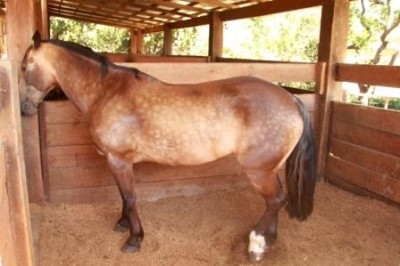 A girl of thirteen then, emphasizing how many lives revolve around horses, crawled between her horse’s front legs and hind legs, closing out her demonstration of trust between human and animal by inducting the horse to lay down, while she was sitting in the saddle. Quite a feat, I am told by people that know more about horses than I do. Rodeo is not only horses; it is also women, sorry – dancing. The Chilean “cueca” (national dance) is based on the rooster seducing the chicken. The only comment that I can make about it is that Belgian roosters do not waste all the time that Chilean roosters do, at least of the dance is a reliable rendition of the rooster’s behavior.
A girl of thirteen then, emphasizing how many lives revolve around horses, crawled between her horse’s front legs and hind legs, closing out her demonstration of trust between human and animal by inducting the horse to lay down, while she was sitting in the saddle. Quite a feat, I am told by people that know more about horses than I do. Rodeo is not only horses; it is also women, sorry – dancing. The Chilean “cueca” (national dance) is based on the rooster seducing the chicken. The only comment that I can make about it is that Belgian roosters do not waste all the time that Chilean roosters do, at least of the dance is a reliable rendition of the rooster’s behavior. Prinsendam, Day 53 – Saturday Feb 26th, 2011
Prinsendam, Day 53 – Saturday Feb 26th, 2011  Voilà! En denk nu maar dat ik zot geworden ben. Zolang ik kan voetballen en tennissen (dat kriebelt alle dagen), bij mijn lief zijn en met familie en vrienden wat plezier maken, kan me dat eerlijk gezegd niet zoveel schelen! Geloof toch maar dat het kan, die déjà-entendu!
Voilà! En denk nu maar dat ik zot geworden ben. Zolang ik kan voetballen en tennissen (dat kriebelt alle dagen), bij mijn lief zijn en met familie en vrienden wat plezier maken, kan me dat eerlijk gezegd niet zoveel schelen! Geloof toch maar dat het kan, die déjà-entendu!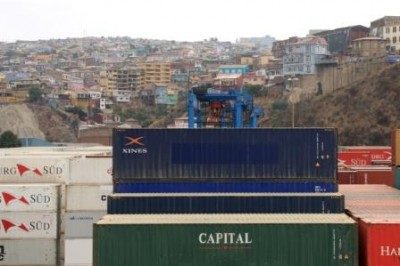
 Alles bij mekaar hebben we in Chili meer tegenslag dan geluk gehad en dat heeft alles met het weer te maken. Hoewel er aan het einde van de Grote Oceaan uiteraard veel neerslag valt, had ik toch verwacht dat er meer zonnige perioden zouden zijn. Met andere woorden, dat de regen niet te veel nevel en mist en treurnis zou brengen, maar gewoon grote plensbuien. Eigenlijk heeft Zuid Chili in dat opzicht meer weg van West Europa – aan het einde van de Minder Grote Oceaan.. Er zal niets anders opzitten dan deze natuurschone streek nogmaals te komen bezoeken.
Alles bij mekaar hebben we in Chili meer tegenslag dan geluk gehad en dat heeft alles met het weer te maken. Hoewel er aan het einde van de Grote Oceaan uiteraard veel neerslag valt, had ik toch verwacht dat er meer zonnige perioden zouden zijn. Met andere woorden, dat de regen niet te veel nevel en mist en treurnis zou brengen, maar gewoon grote plensbuien. Eigenlijk heeft Zuid Chili in dat opzicht meer weg van West Europa – aan het einde van de Minder Grote Oceaan.. Er zal niets anders opzitten dan deze natuurschone streek nogmaals te komen bezoeken.  Driving past the various lake beaches on a summer Sunday afternoon, I was struck by the skin color of the locals: contrary to other parts of South America that I have visited so far, the general tendency was for pale skins. Indeed, I have seen a few real redheads, as they also sported authentic freckles! I have been told that very few Indians (Mapiche) survived the early colonization and that the area, from the coast all the way to the Lake Llanquihue, has been settled by Germans primarily. Traces of that influence could be seen in building styles and store names. I also detected a fire brigade truck that had “Feuerwehr” written across it!
Driving past the various lake beaches on a summer Sunday afternoon, I was struck by the skin color of the locals: contrary to other parts of South America that I have visited so far, the general tendency was for pale skins. Indeed, I have seen a few real redheads, as they also sported authentic freckles! I have been told that very few Indians (Mapiche) survived the early colonization and that the area, from the coast all the way to the Lake Llanquihue, has been settled by Germans primarily. Traces of that influence could be seen in building styles and store names. I also detected a fire brigade truck that had “Feuerwehr” written across it! Rather than spending time in the tourist area with all the gift shops (imported from the mainland), I decided to go for gold: Alexander’s Lookout or “Mirador Selkirk”. The info board stated 2700m. Since that could not be the height, it had to be the length. After fifteen minutes uphill I had left the houses behind me, as well as all (imagined) competitors. Another fifteen minutes and my heartbeat was way up and my shirt started to change color. The first patch of rain forest had been traversed and, the path turned less steep. Another half a mile I detected a lookout point, a couple of hundred meters below the saddle.
Rather than spending time in the tourist area with all the gift shops (imported from the mainland), I decided to go for gold: Alexander’s Lookout or “Mirador Selkirk”. The info board stated 2700m. Since that could not be the height, it had to be the length. After fifteen minutes uphill I had left the houses behind me, as well as all (imagined) competitors. Another fifteen minutes and my heartbeat was way up and my shirt started to change color. The first patch of rain forest had been traversed and, the path turned less steep. Another half a mile I detected a lookout point, a couple of hundred meters below the saddle.  Het lag in de bedoeling om kennis te maken met het leven van de “guaso”. Die is minder bekend dan zijn meer beroemde “gaucho”, en dan de, sedert het heengaan van Bobbejaan, ordinair-geworden “cowboy”. Op een ranch in “the middle of nowhere” werden we vergast op een rodeo, guaso muziek en dito dans, en zelfs op enkele typische gerechten. Het was leuk om zien (minder om proeven). De strafste toer, volgens kenners, was dat een dertienjarig meisje tussen de voor- en achterbenen van haar paard doorkroop, om daarna het paard te doen op de grond liggen terwijl zij zelf in het zadel zat.
Het lag in de bedoeling om kennis te maken met het leven van de “guaso”. Die is minder bekend dan zijn meer beroemde “gaucho”, en dan de, sedert het heengaan van Bobbejaan, ordinair-geworden “cowboy”. Op een ranch in “the middle of nowhere” werden we vergast op een rodeo, guaso muziek en dito dans, en zelfs op enkele typische gerechten. Het was leuk om zien (minder om proeven). De strafste toer, volgens kenners, was dat een dertienjarig meisje tussen de voor- en achterbenen van haar paard doorkroop, om daarna het paard te doen op de grond liggen terwijl zij zelf in het zadel zat.  De volgende etappe ging naar een wijngoed in de Casablanca vallei. Een schilderachtige omgeving, verrijkt met een stijlvol ontvangsthuis, verlengd met de modernste vinificatie infrastructuur, waren ons deel. Omdat dit wijngoed slechts sinds 1993 operationeel is, was ik verrast door het feit dat de druivenstokken zo dicht op elkaar stonden, dat er met de hand moest geplukt worden. Voor de apparatuur werd op geen euro, dollar of (500) peso gekeken, zij was hypermodern en alles was kraaknet. En de wijn?
De volgende etappe ging naar een wijngoed in de Casablanca vallei. Een schilderachtige omgeving, verrijkt met een stijlvol ontvangsthuis, verlengd met de modernste vinificatie infrastructuur, waren ons deel. Omdat dit wijngoed slechts sinds 1993 operationeel is, was ik verrast door het feit dat de druivenstokken zo dicht op elkaar stonden, dat er met de hand moest geplukt worden. Voor de apparatuur werd op geen euro, dollar of (500) peso gekeken, zij was hypermodern en alles was kraaknet. En de wijn?  De wijn was “zeer goed gemaakt”, ook diegene die ik niet lustte – de “sauvignon blanc”. Hoewel het klimaat hier blijkbaar zeer geschikt is voor deze druif, had de limpide wijn, naar mijn gevoel, veel (te veel) aciditeit en te veel pompelmoes ‘fruit”. De chardonnay deed me watertanden en de syrah ging zwierig binnen. Ik blijf me wel afvragen waarom men zich zo strikt houdt aan één druif, want sommige wijnen (bv. de syrah) zouden aan intrinsieke kwaliteit winnen met wat extra versterking van één of meer andere variëteiten. Natuurlijk stelt dat wellicht een marketing probleem in de Amerikaanse markt: daar geraken ze uit melanges niet wijs!
De wijn was “zeer goed gemaakt”, ook diegene die ik niet lustte – de “sauvignon blanc”. Hoewel het klimaat hier blijkbaar zeer geschikt is voor deze druif, had de limpide wijn, naar mijn gevoel, veel (te veel) aciditeit en te veel pompelmoes ‘fruit”. De chardonnay deed me watertanden en de syrah ging zwierig binnen. Ik blijf me wel afvragen waarom men zich zo strikt houdt aan één druif, want sommige wijnen (bv. de syrah) zouden aan intrinsieke kwaliteit winnen met wat extra versterking van één of meer andere variëteiten. Natuurlijk stelt dat wellicht een marketing probleem in de Amerikaanse markt: daar geraken ze uit melanges niet wijs!